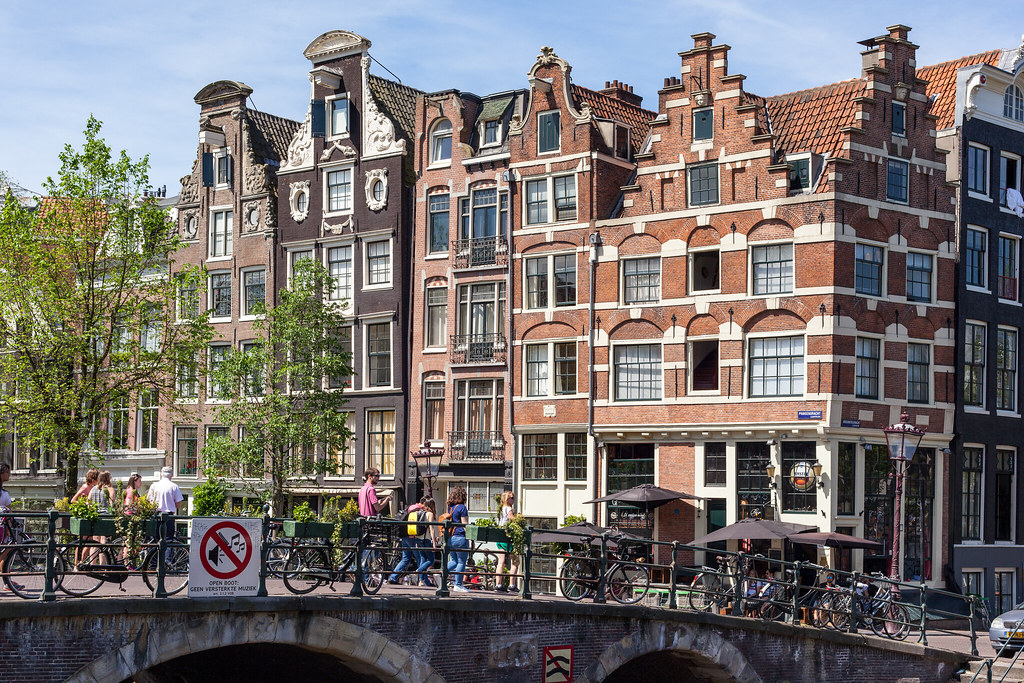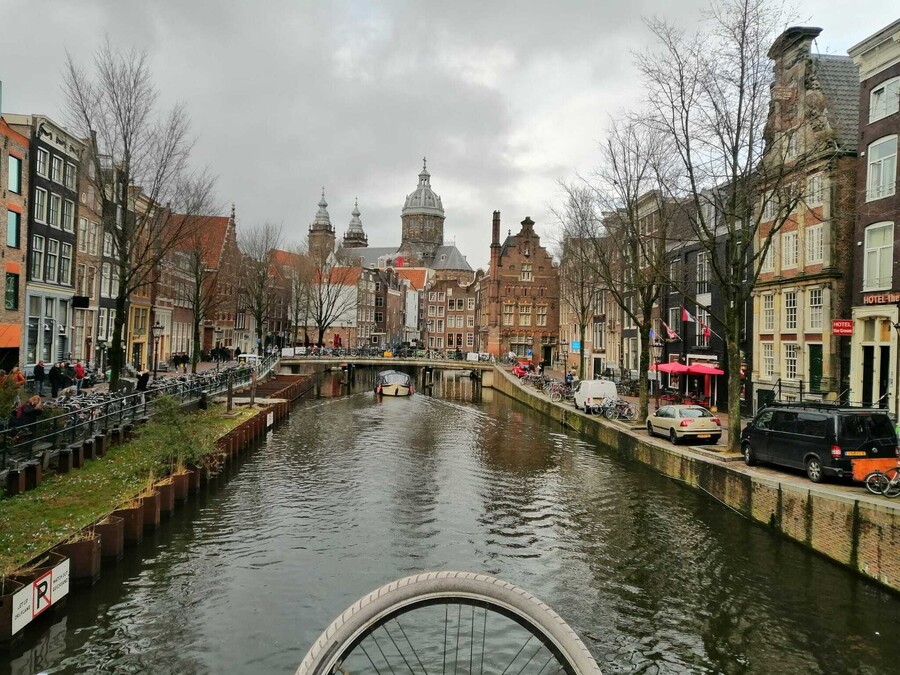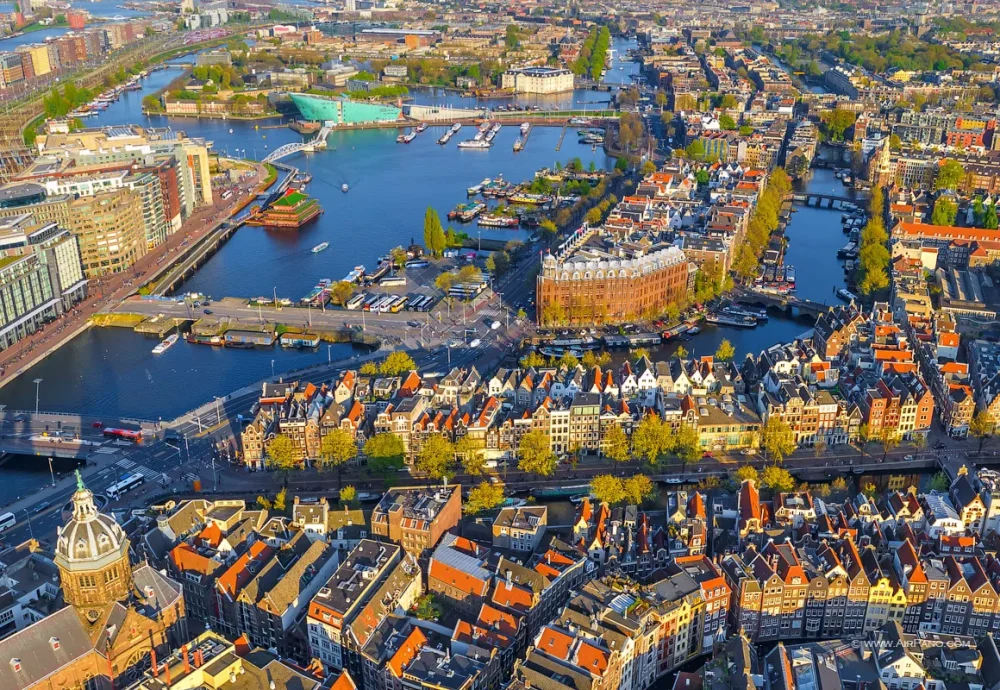Moving to the capital of the Netherlands is becoming increasingly popular with expats, students and IT industry professionals. The city offers a high quality of life, developed infrastructure and a unique atmosphere with a combination of historical architecture and modern technology. Where is the best place to live in Amsterdam, given the differences in neighbourhoods, price levels and other features? Each district has its own advantages, whether it is its central location, proximity to nature, prestigious schools or developed cultural life. It is important to consider the cost of rent, transport accessibility and the level of security.
Amsterdam-Centre: the historic heart of the city
The most famous and one of the first in the rating of expensive districts of the capital. The average cost of renting a one-bedroom flat here starts from 1800-2500 euros per month. It is a tourist centre, so life is full of cultural events, there are many cafes and shops in the city.
Advantages:
- Close proximity to attractions: museums, theatres and famous canals are within walking distance.
- Well-developed public transport: trains to other cities in the Netherlands and Europe leave from the central station.
- High level of comfort: restaurants, upmarket shops, parks and cycle paths.
Disadvantages:
- High prices for housing and utilities.
- Noise due to tourists and busy nightlife.
Jordaan: an upmarket neighbourhood with a bohemian atmosphere
 Jordaan combines old architecture, cosy streets and modern restaurants. The average cost of housing is around 2000 euros for a small flat. It is one of the most prestigious neighbourhoods. Many artists, designers and entrepreneurs choose it after thinking about where to live in Amsterdam.
Jordaan combines old architecture, cosy streets and modern restaurants. The average cost of housing is around 2000 euros for a small flat. It is one of the most prestigious neighbourhoods. Many artists, designers and entrepreneurs choose it after thinking about where to live in Amsterdam.
Features:
- The quiet streets and stylish cafes are the perfect place for a relaxed life.
- Luxury accommodation and security – the high cost is offset by the level of comfort.
- Close to the centre but without the crowds of tourists.
The disadvantage is the high price and limited number of available flats. It usually takes a long time to find an apartment in Jordaan and it is quickly sold out.
De Pijp: a lively neighbourhood with a multicultural atmosphere
De Pijp is known as the most cosmopolitan corner of the capital. Students, expats and young professionals live here, making it a great option for active people. The average rental price is €1,600-2,200 per flat.
Reasons for popularity:
- Best restaurants and markets: the neighbourhood is home to the famous Albert Cape Market.
- Lots of parks and green areas.
- Street life atmosphere: cafes, bars and festivals.
The downside is that the area is congested during peak hours, and because of the high population density, it is difficult to find parking spaces.
Amsterdam-Noord: an up-and-coming neighbourhood
Amsterdam-Noord is one of the fastest growing places in the city. Start-ups, creative spaces and modern housing estates are concentrated here.
Benefits:
- Affordable prices – rentals start from 1300 euros for a spacious flat.
- Developed infrastructure – ferries take residents to the centre free of charge within 5 minutes.
- Modern business centres and technology parks.
It is the best option for those who want spacious housing, good ecology and quick connection to the centre.
Overhoeks: a new luxury neighbourhood with skyscrapers
The Overhoeks neighbourhood is considered the most modern and elite in the capital. It is home to residential skyscrapers with panoramic views of the city.
Features:
- Innovative residential complexes with underground car parks.
- Close proximity to the water and views of the River Hey.
- High security and gated residential areas.
Minuses – rental prices start at €2,500 per month. This is one of the most expensive neighbourhoods, which is more often chosen by businessmen and wealthy expats.
Weesperzijde: a quiet neighbourhood by the water
Where is the best place to live in Amsterdam if you need peace of mind? Weesperzijde is one of the quietest and most picturesque locations. The location is ideal for families and those who appreciate a measured pace of life. Situated along the Amstel River, it offers convenient cycling routes, green walking areas and panoramic water views.
Unlike the central areas, there are hardly any tourists here, making the streets less crowded and more cosy. Along the waterfront are cosy cafes and restaurants offering mesmerising views of the river, while local shops and farmers’ markets allow for a relaxed but convenient lifestyle.
Benefits:
- There are few tourists, making the neighbourhood comfortable for everyday life.
- Developed infrastructure: schools, shops, markets and restaurants overlooking the water.
- Close to the centre: the area is located just minutes away from Amsterdam’s key attractions.
- The average rental price is from €1,600 per flat, making it more affordable than luxury neighbourhoods.
Oud-West: combining history and modernity
Oud-West offers a balance between history and modern urban dynamics. It is the perfect place for those who want to live in an authentic neighbourhood with a rich past, but still enjoy amenities.
Benefits:
- Variety of accommodation: both restored historic houses and new apartment complexes with modern amenities are available.
- Close proximity to Wondel Park, one of the most beautiful places in the capital, ideal for walking, jogging and outdoor recreation.
- Convenient infrastructure: shops, coffee shops, restaurants and proximity to central areas.
- Average prices range from €1,500-2,000 per flat, making the neighbourhood affordable compared to the upmarket parts of the city.
The neighbourhood is suitable for young people, professionals and those looking for a balance between a historic atmosphere and a dynamic lifestyle. Here you can find author’s shops, unique art spaces and trendy establishments that make life interesting and busy.
Westerpark: a green space within the city limits
Where the best place to live in the capital is the Westerpark district, which is recognised as an eco-friendly corner within Amsterdam. It offers a well-developed infrastructure and proximity to nature. It is a great choice for families, athletes and anyone who prefers to live in a quiet location but with quick access to the city centre. The Westerpark is the main centre of the district, where you can play sports, picnic and enjoy walks. Festivals, concerts and fairs often take place here, making life more active and busy.
Why choose Westerpark:
- Low noise levels compared to busier neighbourhoods.
- Lots of greenery and open spaces creating a comfortable living environment.
- Developed infrastructure: shops, restaurants, sports grounds and cycling routes.
- The average rental cost is 1400-1800 euros, making it affordable even for families.
- Close to the centre, but without the hustle and bustle and heavy tourist traffic.
Where to live in Amsterdam: conclusions
 The best neighbourhood to live in Amsterdam depends on your budget, lifestyle and personal preferences. For those who love the hustle and bustle of the city, the Centre and De Pijp are ideal. Those looking for tranquillity and spacious flats should consider Amsterdam-Noord or Westerpark. For those who want to live in an upmarket neighbourhood with modern amenities, Overhoeks and Jordaan are ideal.
The best neighbourhood to live in Amsterdam depends on your budget, lifestyle and personal preferences. For those who love the hustle and bustle of the city, the Centre and De Pijp are ideal. Those looking for tranquillity and spacious flats should consider Amsterdam-Noord or Westerpark. For those who want to live in an upmarket neighbourhood with modern amenities, Overhoeks and Jordaan are ideal.
 en
en  ru
ru  de
de  ar
ar  es
es  nl
nl  hi
hi  fr
fr  it
it  pt
pt  el
el 










